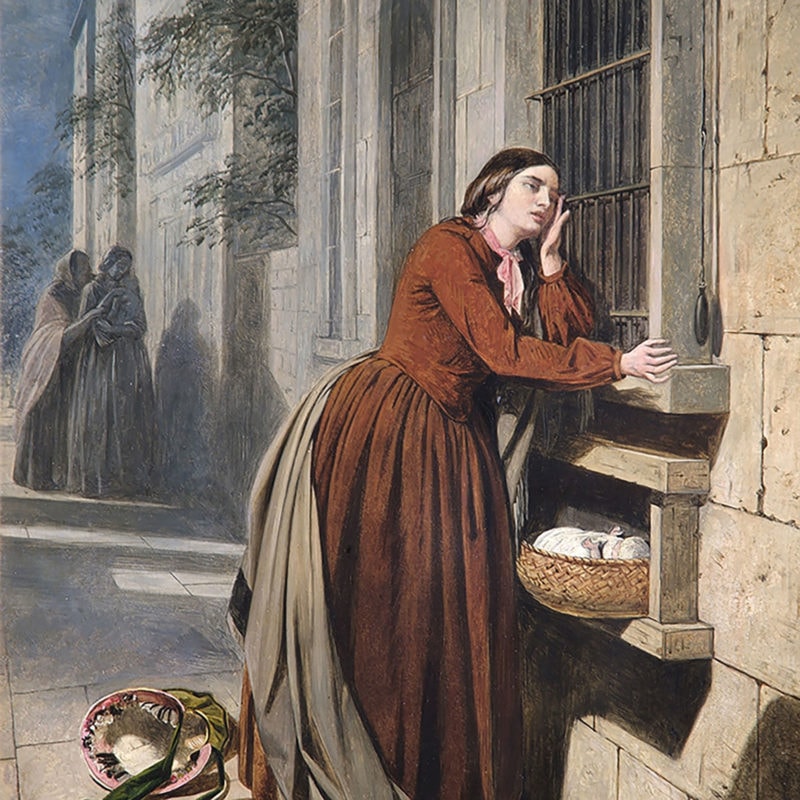About the object
King George II granted a Royal Charter in 1739, permitting the establishment of a Foundling Hospital in London. Hospital Governors immediately wrote to several residential care facilities throughout Europe, seeking information about the practicalities of running such an institution for children. One hospital, L’Hospice des Enfants Trouvés, was based in Paris.
The Paris Hospital for foundlings allowed mothers to anonymously leave their infants at the entrance gate, shielding their identities from Hospital administrators. This covert system was not adopted by London’s Foundling Hospital, however. Instead, Hospital Governors kept meticulous, confidential records, and their original system included the use of identifying tokens. From the late eighteenth century onward, women had to petition the Hospital for their child to be admitted. This was a difficult and intrusive process for Foundling mothers, as they had to explain their dire circumstances, in detail, to a panel of all-male Governors.
About the artist
Henry Nelson O’Neil (1817-1880) was born in St. Petersburg to British parents. His family returned to England in 1823, and in 1836 he enrolled in the Royal Academy Schools. He soon became a member of ‘the Clique’, with fellow artists such as Alfred Elmore, Augustus Egg, and William Powell Frith. They wanted to paint modern subjects with a strong emotional element, as a rebellion against the authority of the Royal Academy. He is best known for Eastward Ho, a patriotic scene painted one year after the Indian Rebellion of 1857. He was elected Associate of the Royal Academy in 1879, but died in London the following year.
Creative responses & inspirations
The first paragraph of Bridget’s draft novel, Paris 1856, inspired by this painting.
“It is dusk. A young woman walks slowly towards the imposing entrance to L’Hospice des Enfants Trouvés, the Paris Foundling Hospital, on the aptly named Rue d’Enfer (Street of Hell). The great edifice rises up in front of her – its windows grilled and the massive door shut and barred. Halfway down the door is the tour. Resembling a large letterbox, it rotates to draw whatever is placed inside into the building. To the right of that is a long bell rope. With a sigh, as she reaches the door, the woman draws aside her cloak. In doing so the ribbons of her bonnet come undone and the bonnet falls to the ground. She pays this no heed and from under her old cloak she brings out a small basket lined with linen, the swaddled infant inside covered with a neatly embroidered coverlet. Her tears fall unstopped as she gazes down at the small figure and with trembling hands she lays the basket in the tour. Out of a small purse she pulls two pieces of paper. The larger one she tucks down the side of the basket. The smaller one she reads, as she has done so often since she composed it, the words written there: ‘I have been baptised. My name is Delphine. Please care for me. I have been torn from my mother’s heart.’ Slipping the paper under the baby’s coverlet and with a final agonised look, the young woman reaches over to the bell rope and pulls it. She turns quickly and disappears into the gathering gloom.”

